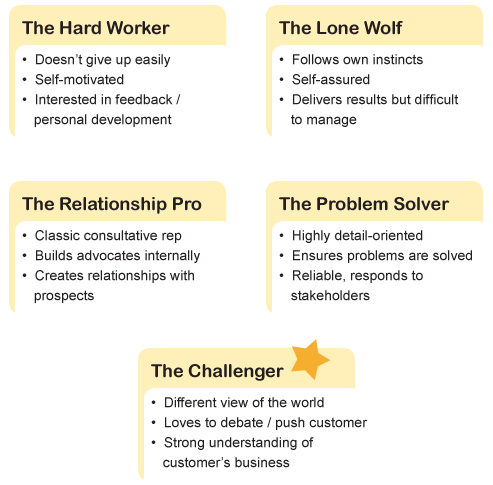When we buy a product, we expect it to work and improve our lives in some way.

image source: royalty free
So if it doesn’t work or perform as expected, we’re quick to voice our dissatisfaction. According to research done at the University of Florida, we really hate unexpected outcomes. It doesn’t seem to matter if the outcome is good or bad, either.
Don’t get me wrong – it’s great to “wow” the customer from time to time. But to some people, even good outcomes feel worse when unexpected, especially among those who value predictability, structure and are generally prevention focused. Brands vie for our attention tirelessly and we respond by favoring certain shampoos, groceries or brand of jeans. We may not notice it, but with every purchase we set up standards to which other brands and products are judged by.

image source: royalty free
This may explain that we tend to stick around with companies that understand us – regardless of what our dominant motivational focus may be. Maybe we don’t need or care about the product in the long run. But brands that offer empathetic, proactive customer service naturally win out. When things turn sour, we’re more confident these companies will make it up to us.
In the online world, many things aren’t under your control. Software can break and go offline. Outages even for a few seconds represent a major disengagement point for your customers. Yet they also present an opportunity to connect with your customer and set things right.
It’s important to seize these moments – because the customer always wins out in the end.
There’s a line that often gets mixed reactions, and it goes something like this: “the customer is always right”. While this may not apply to all situations all the time, there’s some truth to it: Customers definitely want to feel right. They don’t want to feel like they’re getting the short end of the stick. When they do, they’ll just take their business elsewhere.
Here’s a real-world example:
Until recently, my town had a big car mechanic shortage. The few that we had were viewed as dirty, expensive and untrustworthy. People shared horror stories as they tried to pick between bad and worse place for their next oil change.
Within the last year many new shops popped up, offering transparent pricing, cleaner facilities, free wifi, coffee and even play areas for kids. Some shops started allowing customers into the work area, which helped improve the experience for both technician and customer.

image source: royalty free
All these changes made a damaging blow to existing mechanics who were caught by surprise when the expectation bar was suddenly raised. Since they couldn’t adapt, many shops had to close their doors.
Researchers at McKinsey long claimed that at least 70% of customers would leave a company after a single bad experience. Customers won’t say why they’re leaving, so this silent killer can creep up and devastate businesses. Oftentimes business owners and sales reps don’t notice the problem until it’s too late.
Your competitors don’t only threaten your well being by taking your clients – they’re also a formidable force when it comes to disrupting the marketplace. Here are three “e”s to remember if you’re looking to stay relevant in the marketplace (and on your customer’s good side):
- Emphasize the purchase experience
- Empower every customer-facing employee
- Explore optimal solutions with the customer
Let’s look at them in a bit more detail:
Emphasize the purchase experience
In the majority of markets, most of the products and services are quite similar. To get on your customer’s radar, you have to differentiate yourself from the competition – but how?
Purchase experiences are so important for one reason only: they help establish precedent
The answer to this age-old question is to focus on every customer’s purchase experience as though it’s their last. The customer should walk away thinking “These guys are pretty cool! I’ll definitely do business with them again!”
I was talking to a small hardware store owner this week. Once upon a time he got a call from a hotel superintendent who wanted ten tubs of sealer for the courtyard. The unusual part is that he needed it the same day. Unfortunately, the store owner didn’t have enough sealer in stock so he sourced the rest from competing stores. The superintendent was so surprised, he thanked the store owner profusely and brought him tons of business later on.

image source: Hilton Hotels & Resorts
The store owner did this without knowing the true needs of the customer. Perhaps the start of their busiest season was coming up. Maybe they wanted to stock up for a rainy day. In actuality, a trade show was kicking off the next day and the courtyard had to look its best. In short, never make assumptions about your customer’s needs.
Brands should offer so much value before, during and after the sale that the customer could have paid money for that interaction. There are many ways to carry this across: through blog posts, eBooks and advice columns on issues that matter to your users.
It could also involve going the extra mile for your customers. Think of a retail clothing sales person teaching the customer how to care for a garment – to a software company sending over experts to their client’s IT department to help them understand the software better.
Empower every customer-facing employee
According to customer success specialist Nils Vinje of Glide Consulting, the sales and customer service departments of many companies often work at odds with one another.
Since sales departments are more interested in sales, they don’t always match the customer’s needs and customer satisfaction suffers as a result. This system isn’t designed keep customers coming back – there’s a slew of unmet expectations after the purchase experience.
In the book The Challenger Sale, the authors present a way to divide up your sales system to match the work style of each employee. It divides up a salesperson into five types: the hard worker, the lone wolf, the relationship pro, the problem solver and lastly – the challenger.

image source: The Challenger Sale
One of the findings in the book is that the relationship builder – the style most encouraged among sales teams – is the least effective profile for customer service. That’s because customers aren’t looking for relationships initially. They’re looking for a human being to deliver a solution to their problem.
That’s where the “challengers” come in – they blur the lines between sales, marketing and customer service. They push the envelope at the very beginning of the customer interaction, locating a need or a pain point and presenting solutions to satisfy it. Their personality allows them to be flexible enough to adjust this strategy to every customer.
Explore optimal solutions with the customer
More often than not, customers have a specific solution in mind that they want to see – anything less than that would be considered unacceptable in their eyes. Unfortunately, sales reps haven’t perfected their mind-reading skills yet, so a delicate problem could be tackled with a number of workarounds.
The reason you should offer multiple solutions (if possible) is that you can present them to your customer in a comparative fashion. While these options may not be what your customer has in mind, phrasing them properly enables you to highlight the strength and weakness of each. Here’s why offering several solutions is a good idea:
- When there’s more than one way. Sometimes a customer will want a certain solution to a problem with no desire to consider or understand alternatives. If there are many ways to come to a solution, present them all. It’s an excellent opportunity to better understand the customer’s problem and recommend the most desirable outcome for their application.
- When it’s a workaround to a problem. Simply put, you never want to brush off a request with a “no”. For example, sometimes customers will ask us for a integration with X that won’t be on our roadmap for a while. This means that we must come up with a workaround to help them in the meantime. Even if stopping at a “no” is inevitable, learn to soften the blow with small suggestions.
- When it’s a potential problem area. There are also times when you must steer the customer away from a bad decision. When choosing between delivering good or bad news first, you should opt for the latter. Research shows that subjects who got the bad news first were more receptive to change. Participants who got the good news first were less interested in changing their behavior, and were less likely to act to improve their situation.
What it means to your customer
Before customers start worrying, they take notes. They’re keeping track of what they’re asking for and getting.
For example, whether you decide to check into the best five-star hotel or engage with a low-cost airline, you know what you’re going to get. Depending on what you go with, your expectations will be set accordingly.
You understand that the marketing and sales teams have communicated the right information to you – you’ve got no expectation gap, or that it’s been minimized.
So when you decide to engage with a low cost airline or budget hotel, you know you’re getting. They’ve set your expectations appropriately, and anything above beyond the most rudimentary of experiences is a positive and will get you to buy again.
At the same time, they’re still leaving the door open for opportunity to “wow” you here and there.
Note: This article was originally published on the Helprace Blog.



